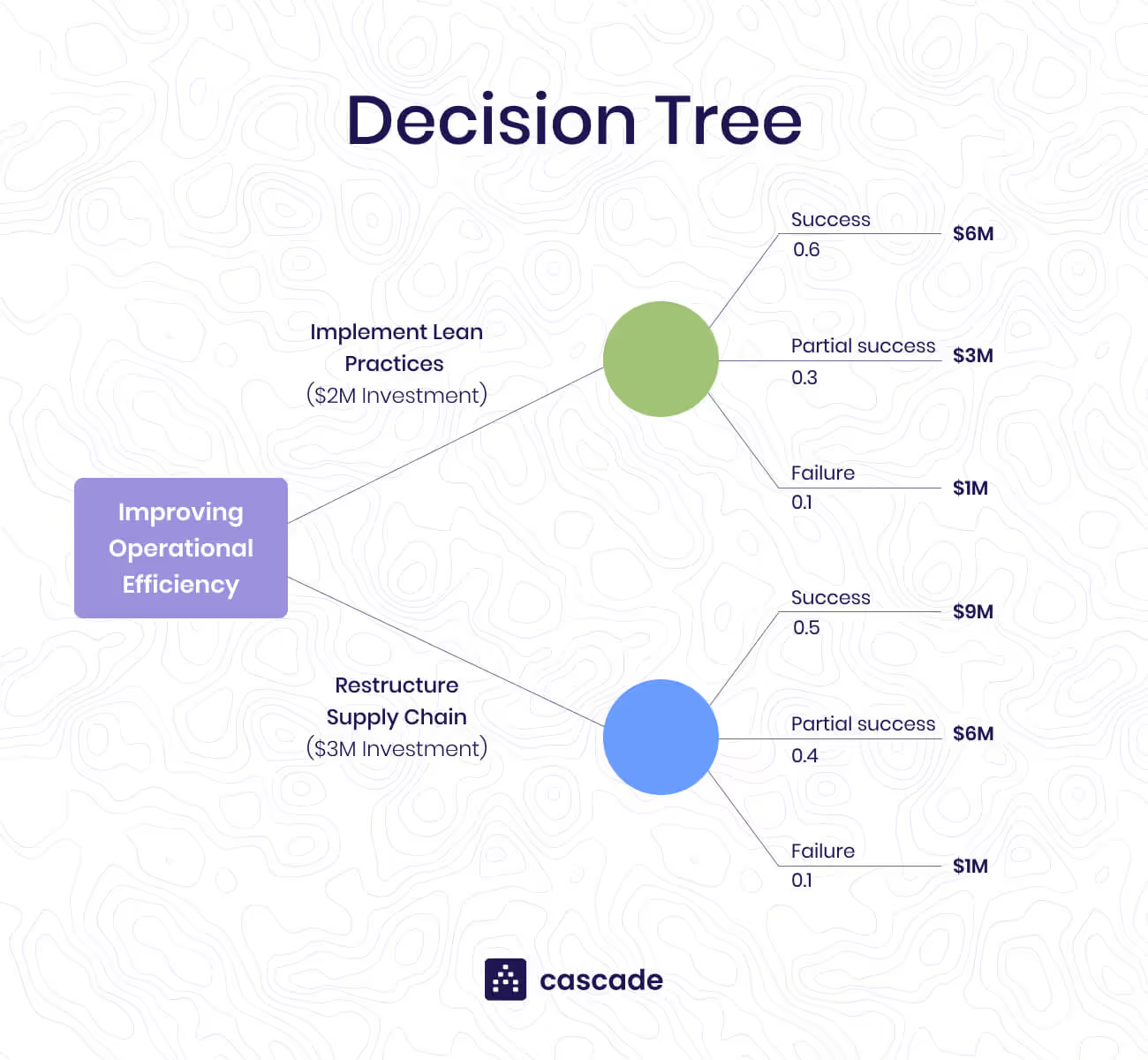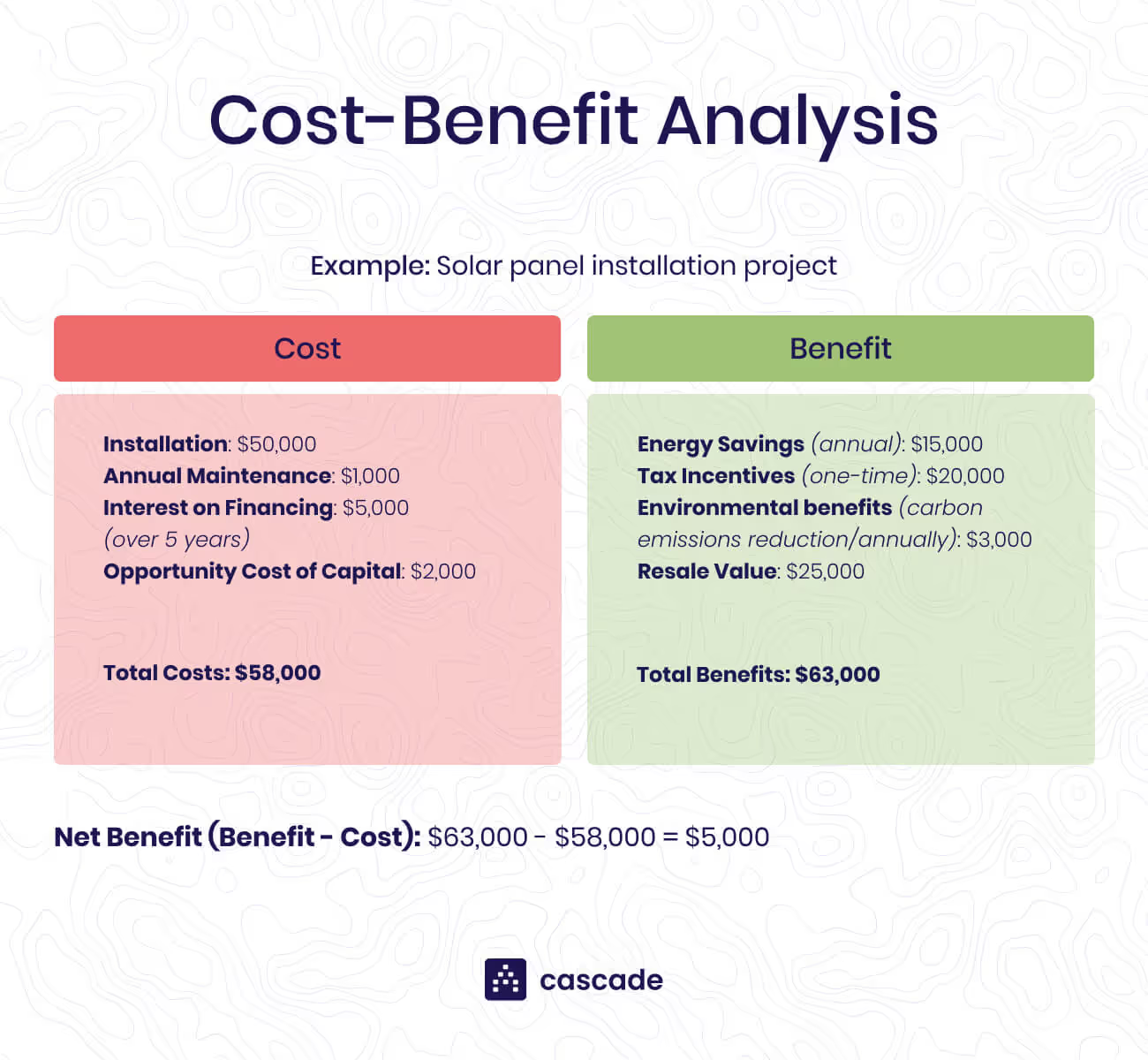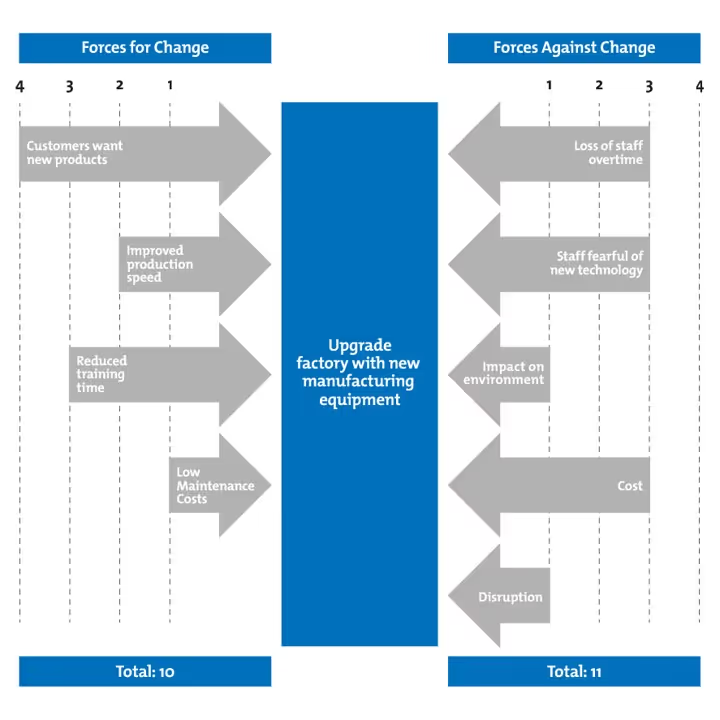Making decisions, especially in complex business systems, is becoming more and more difficult due to the overload and chaos of information we work with.
The pressing question is: How do you make the right decision, knowing that every decision carries the weight of consequence and opportunity cost?
In this article, we discuss the different decision-making tools that help business managers and their team members make informed decisions to achieve desired business outcomes.
You Should Start With Data
Good decisions hinge on making the right moves—and the foundation of those moves comes in the form of data.
Data replaces hunches with hard facts, ensuring you’re not operating blindly. As a result, you can pinpoint the real problem and determine the best course of action to fix it. Data also sharpens your focus, allowing you to allocate resources where they'll have the most impact.
After spotting a problem, you can use the decision-making tools below to find the best solution. Each tool has its specific uses and advantages. In some cases, using more than one tool will help you make a better decision.
📚Recommended read: Centralized Business Observability To Boost Your Bottom Line
Decision Matrix
.avif)
A decision matrix is a tool that simplifies the comparison of multiple options against a set of criteria and weights. It transforms complex decisions into a straightforward numerical format, making it easier to identify the best decision.
Decision matrices work well when dealing with multifaceted decisions that involve numerous factors. They help you evaluate options objectively, balancing factors like cost, quality, reliability, and many others. These tools also give you clarity and cut the noise so you can make the right decision based on logic, not emotions.
Some examples of ideal situations to use a decision matrix include:
- Choosing a new supplier and evaluating potential ones based on quality, price, delivery time, etc.
- Determining which competing projects to invest in and using factors like return on investment (ROI), risk, and strategic alignment to determine the winner.
- Prioritizing projects that deliver the most value when resources are limited.
- Selecting the right candidate that meets the job’s qualifications and eliminating biases during selection.
✨Download a free Excel template to create your decision matrix.
How to use it:
- Define your objective and identify relevant criteria.
- Assign weights to each criteria.
- List your options and assess them against the set criteria.
- Calculate scores for each option based on the criteria weights.
- Select the best alternative with the highest total score.
📚Recommended read:How to create a decision matrix
SWOT Analysis
.jpg)
The SWOT Analysis is an effective decision-making tool used to assess an organization's internal strengths (S), weaknesses (W), external opportunities (O), and threats (T).
SWOT is most commonly used during the strategic planning phase to evaluate the organization's current situation and chart a future course. It isn’t limited to self-analysis and can be used to assess competitors. It’s also a useful tool in risk assessment.
Here are some ideal scenarios to use SWOT analysis:
- Before launching a new product, entering a new market, or conducting a business expansion.
- Studying rival companies to identify gaps in the market or potential partnerships.
- To ensure market alignment before investing in product development or major updates.
✨Download a free template to create your SWOT analysis.
How to use it:
- Identify and list external and internal factors relevant to your organization’s strengths, weaknesses, opportunities, and threats.
- Evaluate each factor's significance and impact.
- Prioritize them based on importance and use your analysis to inform strategies.
- Leverage strengths to capitalize on opportunities, address weaknesses to mitigate threats, and align these insights with your goals and decisions.
- Review and update your SWOT analysis to adapt to changing circumstances and refine your strategies.
📚Recommended read: SWOT Analysis Template: How to do vital strategy groundwork
Decision Tree

A decision tree is a graphical representation of decision-making processes that displays a series of choices and their potential outcomes in a tree-like structure. It’s ideal for breaking down complicated options into a step-by-step visual framework that shows potential outcomes based on different criteria.
A decision tree is useful in scenarios like the following:
- Facing intricate decisions with multiple outcomes like business investments and project management.
- Planning for risk management in any context, like disaster response or financial investments.
- Distributing resources for efficient and effective utilization.
- Brainstorming new products and features to align with market needs and budget constraints.
How to use it:
There are different types of decision trees. Here are the general steps to using them:
- Define the decision and list your options for each.
- Identifying relevant criteria for each option.
- Create branches for choices, with chance nodes for uncertainty if needed.
- Assign values to outcomes and calculate expected values.
- Choose the best solution with the most favorable outcome based on criteria.
📚Recommended read: Teaching Guide: Decision Trees
Scenario Planning
Scenario planning is a decision-making model that explores the feasibility of multiple future scenarios to anticipate and prepare for various possible outcomes. It's a proactive approach to decision analysis that helps stakeholders adapt to uncertainty.
Scenario planning also fosters innovation by considering various market conditions, including the good and bad.
It’s a common misconception that you only use scenario planning to avert difficult situations, as you can also use it to capitalize on an unexpected opportunity.
Some specific scenarios for using this decision-making tool include:
- Launching new products in industries susceptible to rapid technological changes.
- Managing risks in dynamic industries like supply chains, financial markets, and cybersecurity.
- Developing strategies with far-reaching consequences, such as those influenced by economic, infrastructure, or government policies.
- Considering significant business mergers and acquisitions.
How to use it:
- Think of multiple future scenarios, including best and worst cases.
- Identify key uncertainties and create detailed narratives for each scenario.
- Analyze their impact on your goals or decisions.
- Use the resulting insights to develop flexible strategies.
💡Use this useful scenario planning template.
Cost-Benefit Analysis

The cost-benefit analysis (CBA) is a systematic approach used to evaluate the benefits and costs of a decision. It quantifies and compares the positive and negative consequences to determine whether a choice is economically justified.
This decision-making technique often involves financial metrics like revenue or expenses. It can also be used to evaluate intangible benefits and costs like employee morale and customer satisfaction. A good CBA also includes opportunity costs, which quantifies the benefits that could be realized when choosing one option over the other.
A company should consider pursuing a project when the benefits outweigh the costs.
Here are some concrete situations where a CBA can be helpful:
- Before launching a new product, you can use CBA to assess the cost of development, production, and marketing vs. the expected revenue and profit.
- When investing in new machinery, CBA can compare the initial investment and ongoing operational costs vs. the expected cost savings or revenue increases generated by the investment.
- When assessing the costs of advertising and promotional campaigns against the expected increase in sales or market share so you can allocate marketing budgets effectively.
How to use it:
- Identify costs and benefits associated with a decision or project.
- Quantify them in monetary terms.
- Account for the time value of money.
- Calculate the net present value (NPV) or ROI.
- A positive result suggests a financially justified decision or investment.
Pareto Analysis

The Pareto analysis depends on the Pareto Principle (often called the 80/20 rule), which states that roughly 80% of the results come from 20% of the efforts. It also means you can resolve 80% of the problems by looking for 20% of the causes.
Pareto analysis helps you determine the root cause of a problem and quickly solve it by focusing on the ones with the highest impact on the organization. A Pareto chart will also show the cumulative impact caused by unresolved problems.
However, it relies on past data, which can’t guarantee relevancy in future scenarios.
Some scenarios where Pareto analysis is useful include:
- Identifying and prioritizing actions that yield the majority of the goal.
- Allocating the budget to activities that generate the most returns.
- Identifying vital causes that lead to the most defects and errors.
- Identifying significant cost drivers that contribute the most to the overall expenses.
How to use it:
Pareto analysis is simple to do.
- List the problems and their causes.
- Identify as many causes as you can.
- Assign a score to rank them based on the level of negative impact on the company.
- Organize these problems into groups.
- Develop an action plan that focuses on the problems with the higher scores.
📚Recommended read: QI Essentials Toolkit: Pareto Chart
Force Field Analysis

Force Field Analysis is a decision-making and change management tool used to assess and visualize the factors (forces) that either drive or restrain a desired change within an organization or situation.
Situations maintain an equilibrium between forces that promote and hinder change. The driving force must be stronger than the resisting force to change a situation. With the force field analysis, you can determine which factors must be strengthened and which ones must be eliminated to achieve a goal.
Scenarios that will benefit from a force field analysis include:
- Executing significant organizational changes like process. improvements, mergers, or new technology applications.
- Identifying why some problems persist and resist traditional solutions.
- Evaluating the pros and cons of situations like product launches and policy development.
- Understanding group dynamics during project collaborations and team-building workshops.
How to use it:
- Define the proposed change and its elements.
- Identify the driving forces and restraining forces that are in favor and opposed to the change.
- Place the driving forces on the left side and the restraining forces on the right side of the diagram.
- Evaluate their impact by assigning a score to each one and tally the total scores on both sides.
- You can proceed with the change if the score on the left side is higher. Otherwise, if the right side is higher, think of ways to strengthen the driving forces or weaken the opposing forces.
📽Watch this 8-minute video to learn more about Lewin's Force Field Analysis Model.
Make Confident And Strategic Decisions With Cascade 🚀
The decision-making methods mentioned above are only effective when you have the right data. Cascade lets you connect your business data to your core strategic initiatives and gain centralized observability of what’s happening across your organization.
With the right data and business context at your fingertips, you can make data-driven business decisions quickly and efficiently—while staying aligned with the overall strategy.
Sign up today for free or book a guided 1:1 product tour with one of Cascade’s in-house strategy execution experts.
FAQs
What are decision-making tools?
Decision-making tools are methodologies, frameworks, or techniques that help individuals or organizations make informed choices, solve problems, and prioritize resources.
What are the benefits of using decision-making tools?
Decision-making tools help in making choices that are objective and based on a clear analysis, simplifying complex decisions into understandable parts. These tools reduce biases, save time, and offer a systematic approach to evaluate options, which boosts confidence in the chosen course of action.





.png)
.jpg)
.jpg)
%20(1)%20(1)%20(1)%20(1)%20(1).png)



